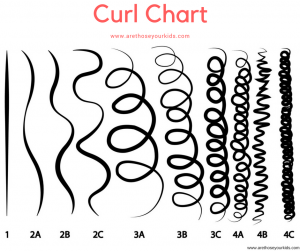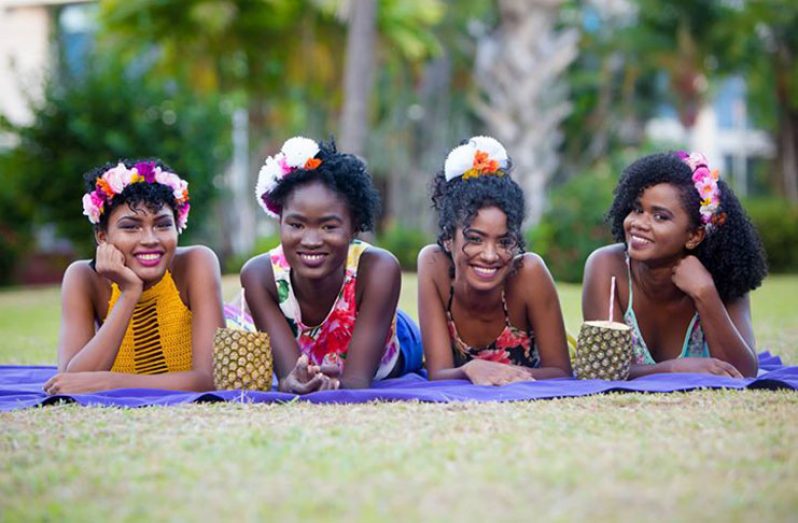Growing up with a mixed (African, Portuguese and Chinese mixture) father and an Indian mother was quite bitter-sweet when culture and race, inclusive of hair was concerned. If I am to be brutally honest, my mother was not very familiar with hair textures like mine. I always had a slick, pulled back ponytail throughout my years of primary and secondary schoolings. Until, of course, when I was about the age of 15, my paths crossed with some friends who actually wore their curly hair out in public, almost every day.
My mind at that said time thought my hair was only to look like that whenever I washed it, the correct and ONLY way was to brush the curls out, pull them back and ‘tame’ them with products. What felt like a rebellious side of myself at the time, was actually increased knowledge and research on natural hair. All that I have learned from my friends with curls, online research and shared experiences manifested its way and cleared my ignorance (safe to call it that). I realised that I can wear my curls down and it was actually okay to do so. As a little girl, I cried because my hair was not ‘straight’. I always thought that by having straight hair, it automatically means you’re beautiful- or at least that’s what society portrayed at the time of my upbringing. Not to say straight hair is not beautiful or I am not blaming society and my family- it is just a matter of true acceptance. Acceptance, of one’s curly hair of course.

Progression surely is evident from the time when I was a little girl to now as it relates to naturally curly or kinky hair. I am familiar with so many faces who share the same experiences as I have, some even more drastic. The natural hair movement is on the rise, even in our very own country. ‘Curl Fête’ is an annual natural hair and beauty exposition, held in Georgetown. Tamika Henry co-founder of the event and brand expressed her advice on taking care of your crown- sorry, I meant curls. “When it comes to natural hair, there is no such thing as ‘one size fits all.’ Your waves, curls, kinks, naps and knots are as unique as you are! The trick is figuring out the combination of products, treatments and styles that work best for YOU, even if you do take advice from natural hair gurus.” She continued by saying, “Natural hair is indeed versatile but I believe that a lot of the frustration with caring for our natural hair comes when we try to make our hair do something that it was simply not meant to do at the molecular level. For example, our hair is not straight due to chemical bonding within and between strands that result in curves, curls and folds.
So, when we try to force our natural hair to be slick, it requires chemical treatment, extreme heat, excess products and a lot of effort, and still, sometimes it doesn’t work and we get frustrated. A great place to start is just appreciating the beauty of your curl pattern and finding styles that compliment your texture. Central to all natural hair care however is moisture, moisture, moisture! Understanding your hair porosity will go a long way in assisting you with product selection because porosity determines how well your hair accepts and retains moisture, and therefore the consistency and moisture content of products that are ideal for your hair, as well as the best way to seal in that moisture. Healthy natural hair is moisturised natural hair.”
Personally, I also think that knowing what type of hair you have can be of much help. There are four general types of hair: Type 1 is what we all commonly call straight hair. Straight hair is perhaps the easiest hair type to style and reflects the most sheen. Type two is ‘wavy hair’ textures. Within Type 2, there are wavy 2A, wavy 2B and wavy 2C. Wavy hair can be quite frizzy and it is in the middle of curly and straight hair. Type 3 is considered curly hair and within it, there are 3A, 3B and 3C gradings. All of these grades have one thing in common which is, they all hold a fixed ‘S’ shape with or without products. Curly hair is prone to damage quickly and curls will not form ‘aesthetically’ if you do not take care of them. Finally, Type 4 is also known as ‘kinky’ hair and it holds the shape of a zig-zag pattern. This hair requires a gentle touch as it is the most fragile of all four types. Kinky hair is naturally dry, hence, extra moisture is always necessary. Also, to clear up a misconception people often have- kinky hair grows!
All hair types require different methods of care. Generally, all should include cleansing (shampooing), conditioning, moisturising and then styling products- whatever those products are depending on your hair and what you think is best for it. “Tie your hair up Marissa”, “Comb it out” or “Tame it” are words that do not phase me anymore. Curly hair is more than just fetishes and trends, it’s a reminder of cultural roots and history.



.jpg)








